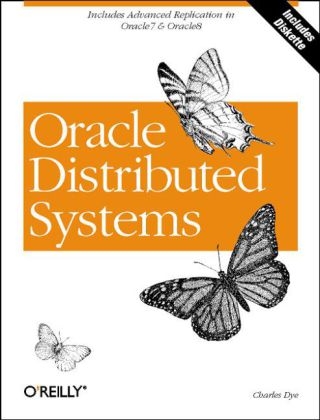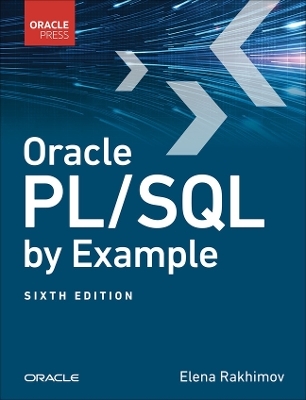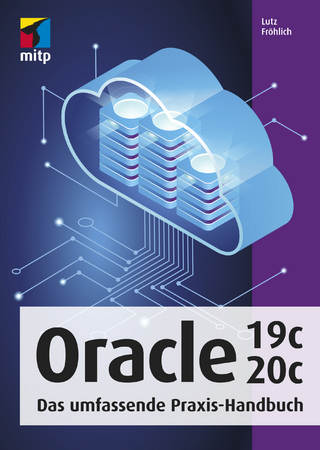
Oracle Distributed Systems
O'Reilly Media (Verlag)
978-1-56592-432-1 (ISBN)
- Titel ist leider vergriffen;
keine Neuauflage - Artikel merken
Most organizations that use the Oracle relational database management system (RDBMS) nees to use multiple databases. There are many reasons to use more than a single database in a distributed database syste,s: different databases may be associated with particular business functions, such as manufacturing or human resources; databases may be aligned with geographical boundaries, such as behemoth database at a headquarters site and smaller databases at regional offices; two different databases may be required to access the same data in different ways, such as an order entry database whose transactions are aggregated and analyzed in a data warehouse; a busy Internet commerce site may create multiple copies of the same database to attain horizontal scalability; and a copy of a production database may be created to serve as a development test bed. This book describes how you can use multiple databases and the distributed features of Oracle to best advantage. Distributed database environments offer a number of benefits over single-database systems, including tunability, platform autonomy, and location transparency.
This book describes the benefits and tradeoffs of distributed database systems.
Charles Dye is the Database Architect for Excite, Inc., where he manages some of the world's busiest databases, which supply content to one of the world's hottest web sites. Prior to joining Excite, Charles was the Senior DBA at the Dialog Corporation, where, among other things, he designed a distributed database environment serving hundreds of thousands of customers. In addition to authoring Oracle Distributed Systems, Charles also coauthored Oracle Built-in Packages with Steven Feuerstein and John Beresniewicz (O'Reilly & Associates, 1998). He is also a frequent speaker at Oracle Open World and IOUG-A conferences.
Preface. I. The Distributed System. 1. Introduction to Distributed Systems Terminology and Concepts What Is a Distributed Database System? Benefits of Distributed Databases Multiple Schema Versus Multiple Databases Options for Distributed Data Perils of Distributed Databases Differences Between Oracle7 and Oracle8. 2. SQL*Net and Net8 Protocol Overview Architecture SQL*Net/Net8 Tuning Load Balancing Oracle8 Scalability Options SQL*Net/Net8 Client Configuration SNMP Support Security. 3. Configuration and Administration Initialization Parameters Database Links Distributed Queries and Transactions Distributed Backup and Recovery Multiversion Interoperability. 4. Distributed Database Security Privilege Management Authentication Methods. 5. Designing a Distributed System Characteristics of a Distributed System The Global Data Dictionary Replication-Specific Issues Data Partitioning Methodologies Application Partitioning Strategies Procedural Replication. 6. Oracle's Distributed System Implementation Meeting the 12 Objectives with Oracle Oracle's Global Data Dictionary 7. Sample Configurations The High-Availability System Geographic Data Distribution Workflow Partitioning Data Collection and Consolidation Loosely Coupled Federation./ 8. Engineering Considerations Schema Design and Integration Application Tiering Designing a Replicated System. II. Replication. 9. Oracle Replication Architecture What Is Oracle Replication? Types of Replication Architecture Components Replication of DDL Oracle8 Enhancements Oracle8i Enhancements Alternatives to Replication. 10. Advanced Replication Installation Initialization Parameters Redo Logs and Rollback Segments Size and Placement of Data Dictionary Objects Administrative Accounts, Privileges, and Database Links. 11. Basic Replication About Read-Only Snapshots Prerequisites and Restrictions Snapshot Creation Basics Simple Versus Complex Snapshots Snapshot Logs Subquery Subsetting Refresh Groups Management and Optimization Scripts. 12. Multi-Master Replication Concepts and Terminology Getting Started Replication Groups Master Site Maintenance and Propagation Controlling Propagation The Replication Catalog Table Replication Replicating DDL Your Replicated Environment Advanced Replication Limitations. 13. Updateable Snapshots About Updateable Snapshots Creating Updateable Snapshots Communication Flow Controlling Propagation and Refreshes Maintenance. 14. Procedural Replication When to Use Procedural Replication How Procedural Replication Works Creating a Replicated Package Procedure Restrictions on Procedural Replication An Example. 15. Conflict Avoidance and Resolution Techniques Data Integrity Versus Data Convergence Applications That Avoid Conflicts Types of Conflicts Detected How Oracle Detects and Resolves Conflicts Column Groups and Priority Groups The Built-in Methods Writing Your Own Conflict Resolution Handler. III. Appendixes. A. Built-in Packages for Distributed Systems. B. Scripts and Utilities
| Erscheint lt. Verlag | 11.5.1999 |
|---|---|
| Zusatzinfo | illustrations |
| Verlagsort | Sebastopol |
| Sprache | englisch |
| Maße | 178 x 232 mm |
| Gewicht | 880 g |
| Einbandart | kartoniert |
| Themenwelt | Informatik ► Datenbanken ► Oracle |
| Mathematik / Informatik ► Informatik ► Office Programme | |
| ISBN-10 | 1-56592-432-0 / 1565924320 |
| ISBN-13 | 978-1-56592-432-1 / 9781565924321 |
| Zustand | Neuware |
| Haben Sie eine Frage zum Produkt? |
aus dem Bereich


